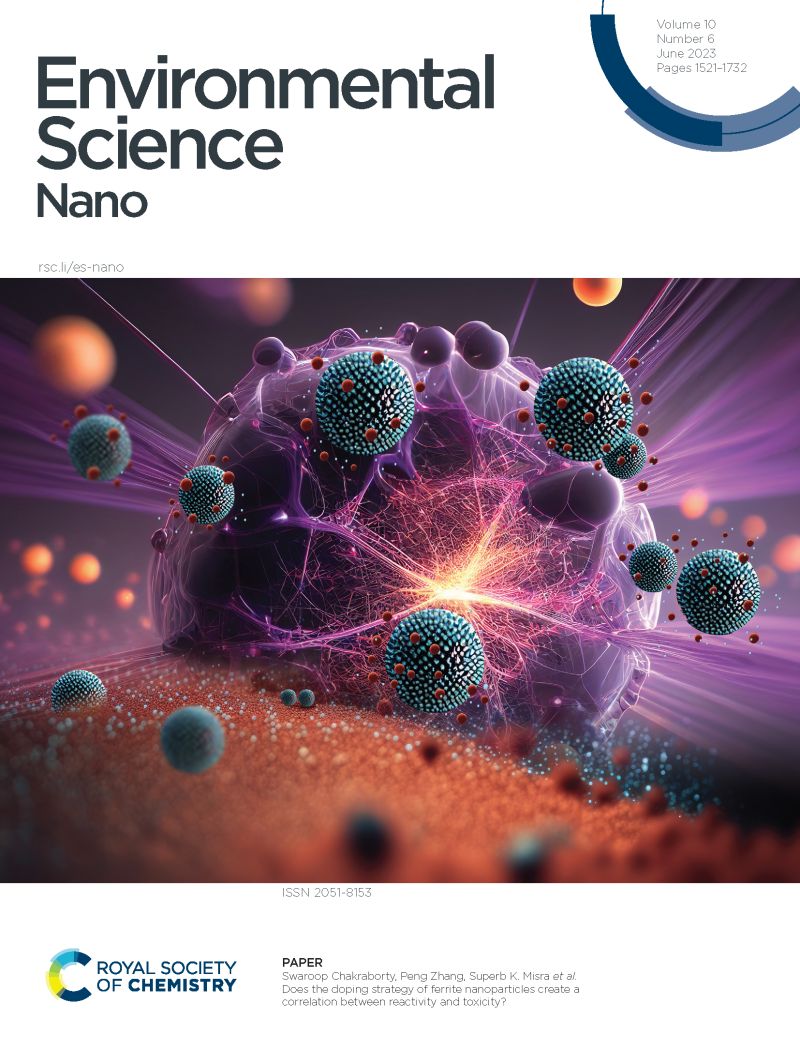Bone-derived hydroxyapatite: Ultrastructure and tuning for controlled dissolution characteristics for a model nanofertilizer
IF 5.1
2区 环境科学与生态学
Q1 CHEMISTRY, MULTIDISCIPLINARY
引用次数: 0
Abstract
Calcium phosphate nanoparticles have been increasingly propounded as an efficient phosphorus (P) fertilizer in crop production. In this study, we used sustainable sourcing of P by recycling bovine bones and modifying the extracted hydroxyapatite using three approaches: calcination and mechano-activation, alkaline hydrolysis, and subcritical water extraction. Hydroxyapatites derived from these treatments were analyzed for ultrastructure, particle size distribution and crystal chemistry to interpret the dissolution characteristics under flow-through microfiltration system. While calcination was the most effective treatment for removing organic molecules—with only 0.22 wt.% of total organic carbon and 0.03 wt.% nitrogen remanining on hydroxyapatite—it led to the largest growth in crystallite size (113–139 nm) compared to hydroxyapatites treated through alkaline hydrolysis (45–93 nm) or subcritical water (33–78 nm). Surprisingly, the mechano-activated hydroxyapatite following the calcination exhibited a sustained and high P release profile, driven by the presence of ultrafine (10–35 nm) amorphous particles mixed with well-ordered and structurally defective structures. Hydroxyapatites recovered by alkaline hydrolysis and subcritical water treatments exhibited slow and steady P release profiles reflecting fewer structural and surface imperfections compared to mechano-activated hydroxyapatite. These findings demonstrate that processing induced ultrastructural and compositional changes in bone derived hydroxyapatite exert a major role in P‐release characteristics. Consequently, these products could be tuned for both sufficiency and efficiency of P fertilization, thus generating sustainably sourced nano P fertilizer for crop production.骨源羟基磷灰石:超微结构和调谐控制溶解特性的模型纳米肥料
磷酸钙纳米颗粒作为一种高效的磷肥被越来越多地提出用于农作物生产。在本研究中,我们通过循环利用牛骨,并通过煅烧和机械活化、碱性水解和亚临界水萃取三种方法对提取的羟基磷灰石进行改性,从而实现磷的可持续来源。通过对不同处理羟基磷灰石的超微结构、粒径分布和晶体化学特征的分析,解释了在流过微滤系统下羟基磷灰石的溶解特性。虽然煅烧是去除有机分子最有效的处理方法——只有0.22 wt.%的总有机碳和0.03 wt.%的氮残留在羟基磷灰石上——但与碱性水解(45-93 nm)或亚临界水(33-78 nm)处理的羟基磷灰石相比,煅烧导致晶体尺寸(113-139 nm)的最大增长。令人惊讶的是,机械活化的羟基磷灰石在煅烧后表现出持续和高P释放特征,这是由超细(10-35 nm)非晶颗粒混合有序和结构缺陷结构的存在所驱动的。与机械活化的羟基磷灰石相比,碱性水解和亚临界水处理回收的羟基磷灰石表现出缓慢而稳定的P释放曲线,反映出更少的结构和表面缺陷。这些发现表明加工诱导的骨源性羟基磷灰石超微结构和成分变化在P释放特性中起主要作用。因此,这些产品可以调整为磷肥的充足性和效率,从而为作物生产产生可持续来源的纳米磷肥。
本文章由计算机程序翻译,如有差异,请以英文原文为准。
求助全文
约1分钟内获得全文
求助全文
来源期刊

Environmental Science: Nano
CHEMISTRY, MULTIDISCIPLINARY-ENVIRONMENTAL SCIENCES
CiteScore
12.20
自引率
5.50%
发文量
290
审稿时长
2.1 months
期刊介绍:
Environmental Science: Nano serves as a comprehensive and high-impact peer-reviewed source of information on the design and demonstration of engineered nanomaterials for environment-based applications. It also covers the interactions between engineered, natural, and incidental nanomaterials with biological and environmental systems. This scope includes, but is not limited to, the following topic areas:
Novel nanomaterial-based applications for water, air, soil, food, and energy sustainability
Nanomaterial interactions with biological systems and nanotoxicology
Environmental fate, reactivity, and transformations of nanoscale materials
Nanoscale processes in the environment
Sustainable nanotechnology including rational nanomaterial design, life cycle assessment, risk/benefit analysis
 求助内容:
求助内容: 应助结果提醒方式:
应助结果提醒方式:


